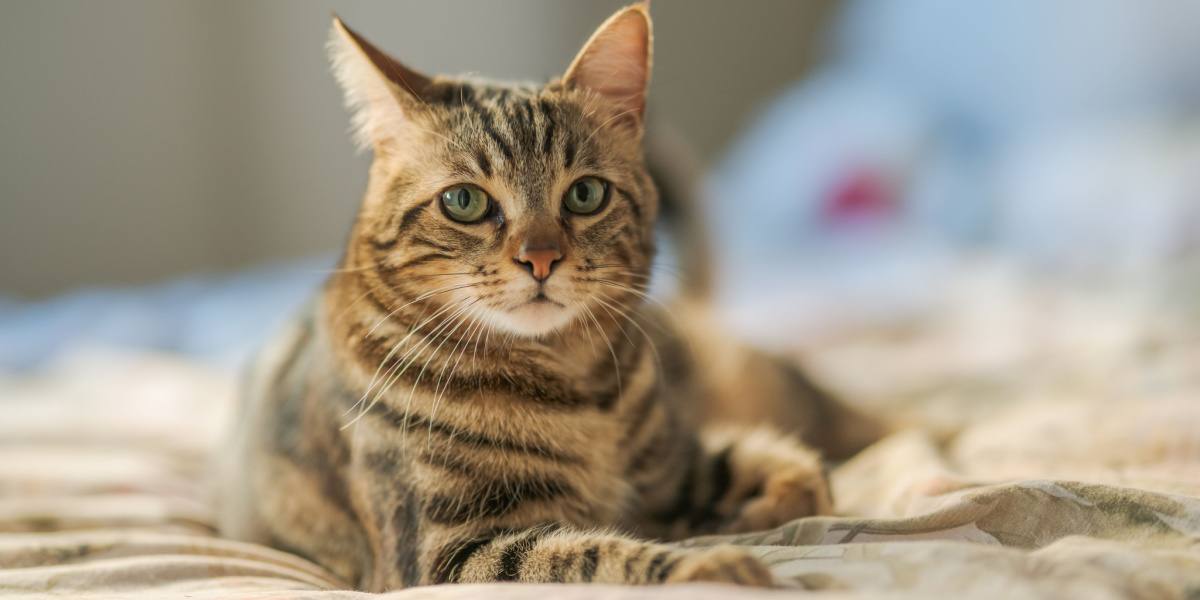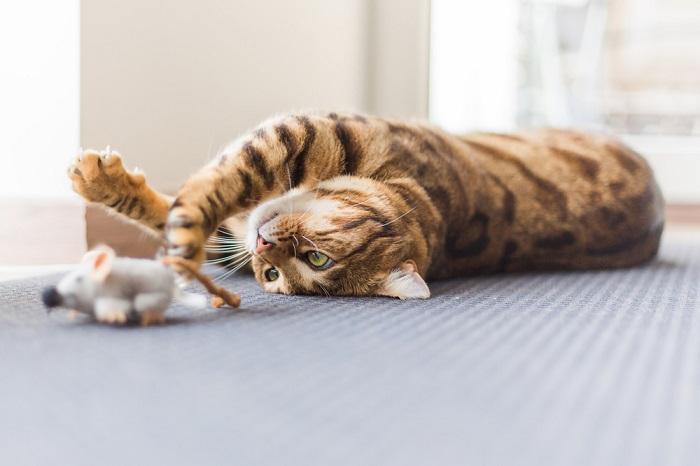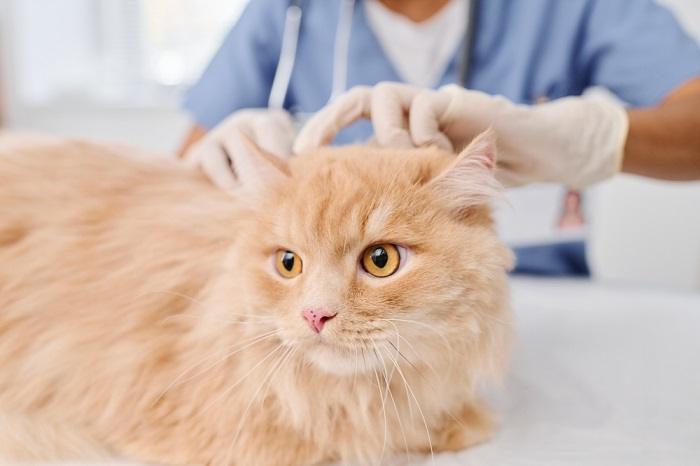
Is your cat trembling, shaking, or twitching?
If your cat is experiencing tremors, this is a serious sign with potentially life-threatening consequences. In these cases, it is very important to try to get to the bottom of what is happening so you can help your cat. This article has been written to help pet parents cope with the challenging situation of seeing their cat experience tremors.
What Does a Cat Tremor Look Like?
A healthy cat should hold their body and head steady, with no tremors or twitches. They should also be able to walk steadily without shaking or wobbling. If a cat is trembling, shaking, twitching, jumping, shivering, jerking, or showing other signs of involuntary movements, then there’s possibly something seriously wrong. You will need to take your cat to see a veterinarian, urgently.
How Common Are Cat Tremors?

While tremors are a serious sign of something wrong, there are a few “normal” causes of transitory shaking and jerking.
While transient, temporary episodes of some degree of tremors can happen as part of a cat’s normal life and sometime cat tremors may happen when a cat is relaxed or even while purring. Still, tremors are signs that usually indicate an underlying problem. There are a number of common causes, as listed below.
Causes of Tremors in Cats
There are some normal situations when a cat might tremble, shake, or twitch, such as:
- When stalking prey
- When playing with catnip
- When engaged in an altercation with another cat
However, when distracted from these situations, a healthy cat will always stop trembling and return to their usual steady, still, controlled pose.
There is a long list of abnormal situations when a cat might tremble. Troubling causes of cat tremors include:
- Vestibular disease – abnormalities of the vestibular system can cause head tremors as well as a lack of balance and coordination.
- Poisoning or toxicity – there are many possible poisons that a cat can get into that can lead to tremors, including metaldehyde (slug bait), drugs (such as marijuana), and toxic plants.
- Anesthesia and sedation – cats may display odd physical signs, such as tremors, as they recover from procedures where they have been sedated or anesthetized.
- Epilepsy – when electrical abnormalities in the brain cause varying degrees of abnormal movements, it can present as trembling to full-on seizing.
- Brain tumors – a range of abnormal neurological signs, from mild tremors to full-scale seizures, can indicate a brain tumor.
- Low blood sugar (hypoglycemia) can cause trembling.
- Insulinoma – a tumor of the pancreas, where excessive insulin is produced, can cause hypoglycemia or low blood sugar (glucose), which leads to tremors.
- Low blood calcium (eclampsia or hypocalcemia) in the post-kittening period, when a female cat is producing high quantities of milk can cause tremors.
- Diabetes mellitus – caused when a diabetic cat’s blood sugar is too high or too low, and excessive insulin has been given
- Inherited conditions such as hypomyelinogenesis, cerebellar hypoplasia (when the cerebellum, a part of the brain does not develop normally), Globoid Cell Leukodystrophy, sphingomyelinosis, or glycogen storage diseases
- Nutritional issues – such as hypervitaminosis A
- Hyperthermia – when a cat overheats
- Hypothermia – when a cat’s temperature drops dangerously low
- Generalized illness – many different underlying diseases (such as liver problems, kidney disease, and many others) can cause issues including dehydration, electrolyte imbalances, and toxemia (the accumulation of toxins in the bloodstream).
When To See a Vet
If your cat’s tremors are only very temporary (such as when they are hyperfocused on hunting), then a trip to the vet may not be necessary. However, if a cat tremors for more than a few moments and if they do not return to normal when interrupted, then they need to visit the vet urgently.
Investigating the Cause of Tremors
If you take a cat experiencing tremors to a veterinarian, you can expect that the following steps may be taken. The overall aim of these procedures is to properly identify the underlying cause of your cat’s tremors so that the most appropriate veterinary medicine and treatment can be given.
1. Detailed History Taking

A thorough examination of a cat experiencing tremors will help a veterinarian get to the root cause.
Your vet will discuss every aspect of your cat’s condition and overall healthcare, including asking questions about what you feed your cat, what their home environment is like, and whether or not your cat is an outdoor or indoor cat (the risk of different conditions varies for each). Any possible exposure to toxins (e.g. flea treatments, garden chemicals, toxic plants, medications) should be mentioned.
Older cats are more likely to suffer from some problems compared to younger cats. If you have any videos of your cat displaying tremors, it is very helpful to show these to your vet.
2. Physical Examination
First, your cat will be viewed from a distance, taking note of any abnormal movements. The vet will observe whether the whole body is affected, or if the tremors occur in a localized area (e.g. just the head).
Your veterinarian will then check your cat over carefully, checking their heart rate, and listening to the heart and lungs with a stethoscope. Your cat will be examined thoroughly. A thermometer will be used to check that your cat has a normal body temperature.
A full neurological examination will normally be carried out. Your vet will take note of a range of different reflexes and other aspects of nerve/muscle function.
3. Routine Laboratory Tests
It’s very likely that your veterinarian may carry out blood tests (a so-called minimum database), including the usual panel of diagnostic tests. These include hematology (blood count) and biochemistry profiles. Thyroid hormone levels may be assessed to rule out hyperthyroidism.
Tests for serious viruses such as FeLV and FIV may be carried out, as these can affect your cat’s immune system, leading to complications.
A urinalysis may be carried out as part of a general review of your cat’s health.
Rarely, a sample of cerebrospinal fluid (CSF) may be collected for detailed analysis.
4. Diagnostic Imaging
Radiography (x-rays) may be carried out during your cat’s examination. An ultrasound may also be conducted as part of an overall evaluation of your cat’s health.
Advanced imaging such as computer tomography (CT) or magnetic resonance imaging (MRI) scans may rarely be recommended. This may be carried out if a detailed analysis of specific areas is needed (e.g. to image the brain if abnormalities such as lesions indicating structural abnormalities are suspected).
Treatment of Tremors
Treatment of tremors in cats depends entirely on the cause of the issue. For example:
- Hypoglycemia (low blood glucose) requires glucose to be given either by injection or orally.
- Kidney failure requires specific treatment including fluid therapy, a special diet, and a range of different medications.
- Toxicities may require a range of options. These can include forced emesis (vomiting) to remove toxins from the stomach, the use of activated charcoal, or simple supportive care such as intravenous fluids and monitoring.
The treatment your cat will need depends entirely on the underlying cause of the issue, and your veterinarian will advise you accordingly.
Also Read: The 10 Best Healthy Canned, Soft & Wet Cat Foods For 2023
Monitoring and Prognosis

Giving your cat the best aftercare no when they see the vet is very important, regardless of the prognosis.
Your cat will need to be re-examined regularly to monitor their progress. With many issues (such as toxicities), your cat may return completely to normal within hours or days. With other issues (such as congenital brain problems), the prognosis may be very poor. Your veterinarian is the best person to advise you on expected outcomes.
Home Remedies
Ensure that your cat is at a comfortable, warm temperature (not hypothermic – too cold – or hyperthermic – too warm). Make sure that they have eaten recently (in case of low blood glucose). But in general, a cat that is shivering and shaking needs to go to the veterinarian.
Quick Overview: Cat Tremors






Frequently Asked Questions
What causes tremors in cats?
There is a long list of underlying causes of tremors in cats, including hereditary diseases, toxicities, and underlying diseases.
What do tremors look like in cats?
Tremors look like trembling, shaking, twitching, jerking, or any other type of involuntary movement.
Why is my cat shaking and wobbly?
There is a long list of possible causes: see above.
What should I do if my cat is shaking?
If your cat is shaking for more than a few seconds and if they do not return to normal when you distract them, then you need to call your veterinarian urgently.
Do cats tremble and shake normally?
Cats may tremble or shake in certain situations, such as hunting, playing, when excited, when engaging with cat nip, and some other mundane instances. However, they should always stop trembling and shaking when you distract them. It is not normal for trembling and shaking to happen continuously for more than a few moments.







